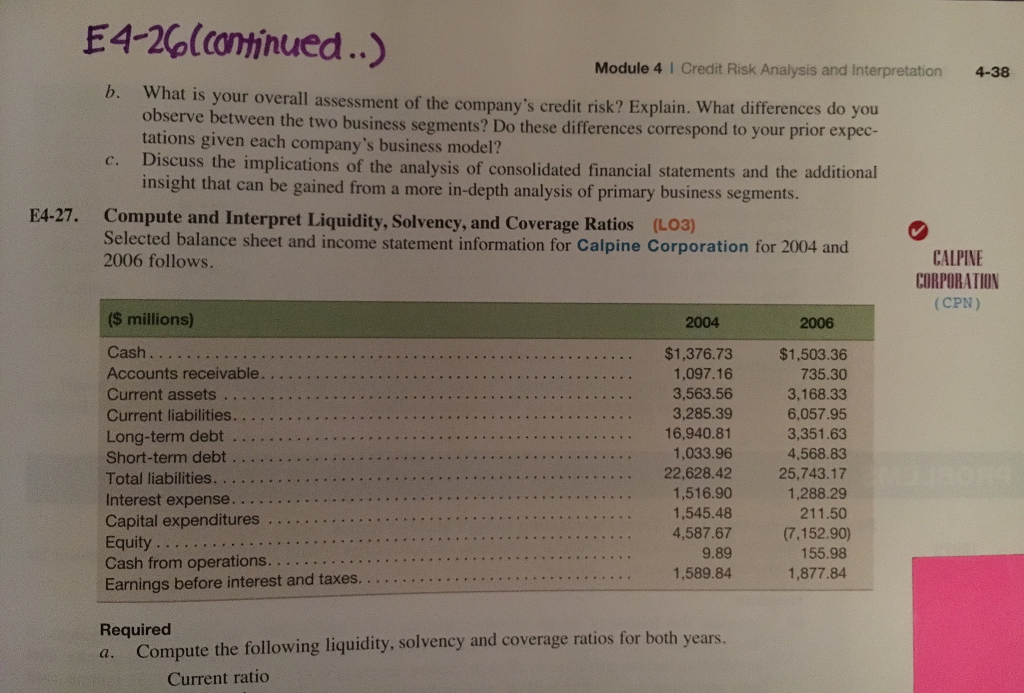Question
In the attached files are the questions to be answered and the information needed to answer them. Answer all parts of the question completely. Questions:
In the attached files are the questions to be answered and the information needed to answer them. Answer all parts of the question completely.
Questions: 4-26
4-26:
a) Compute the return on equity (ROE), the times interest earned ratio and the total-liabilities-to-equity ratio for 2010 for the companys two business segments and the company as a whole. (Use year-end equity for return on equity calculation).
b) What is your overall assessment of the companys credit risk? Explain. What differences do you observe between the two business segments? Do these differences correspond to your prior expectations given each companys business model?
c) Discuss the implications of the analysis of consolidated financial statements and the additional insight that can be gained from a more in-depth analysis of primary business segments.


Step by Step Solution
There are 3 Steps involved in it
Step: 1

Get Instant Access to Expert-Tailored Solutions
See step-by-step solutions with expert insights and AI powered tools for academic success
Step: 2

Step: 3

Ace Your Homework with AI
Get the answers you need in no time with our AI-driven, step-by-step assistance
Get Started


